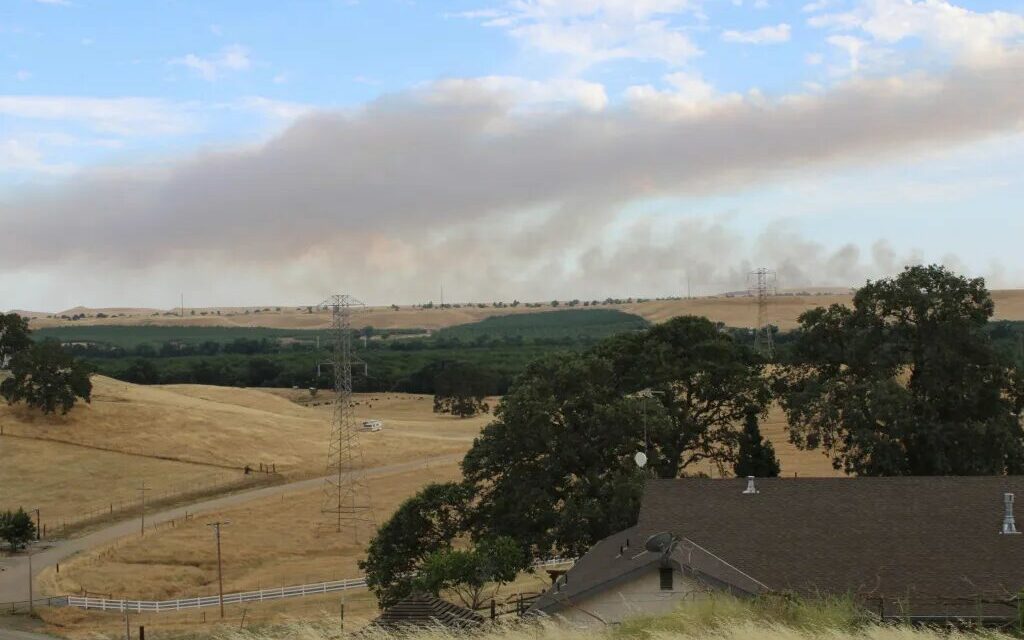By VIVIENNE AGUILAR
Central Valley Journalism Collaborative
Air in the San Joaquin Valley costs a fortune. So say researchers at UC Merced, who found that three prevalent air pollutants in the region can cost San Joaquin Valley residents more
than $700 million dollars per year in medical expenses, school absences and lost productivity.
“People do understand money,” said lead researcher Gilda Zarate-Gonzalez, a Fresno-based health economist and doctor of philosophy in public health. “They do understand the dollar signs, and I want to empower a community to see how much we’re paying for things that are completely preventable.”
The study, “Costs of Air Pollution in California’s San Joaquin Valley: A Societal Perspective of the Burden of Asthma on Emergency Departments and Inpatient Care,” was published in March in the Journal of Asthma and Allergy.
Previous studies have found that the San Joaquin Valley has some of the worst air quality in the U.S. For her research, Zarate-Gonzalez used 2016 data from hospitals and emergency departments in six of the Valley’s eight counties. Stanislaus County and Kings County did not provide data.
Researchers focused on data from 2016 because that year California experienced fewer wildfires, and therefore better air quality, than four of the five years leading up to the start of their work.
The study took three years to complete. First, Zarate-Gonzalez and her team assessed the impact of asthma on quality of life. Next, they used the hospital data to track exposures to specific pollutants known to increase the risk of asthma – particulate matter (PM2.5), ozone and nitrogen dioxide. Finally, they used education and social security data
to calculate the number of school and work days people missed due to respiratory illnesses.
In 2016, estimated costs related to emergency department visits totaled $498,014,124. Costs related to hospital admissions totaled $223,552,720.
Researchers estimated that, in 2016, even a reduction of one part-per-billion in each of the three pollutants they studied would have prevented about 21,000 visits to emergency departments and about 19,000 hospitalizations. The resulting cost savings would have been almost $137 million, including $93,651,220 related to adults, $14,891,329 related to seniors and $28,179,332 related to school-aged children.
“When a child gets sick, a parent or a caretaker is going to have to take them to the emergency room,” Zarate-Gonzalez said. “And so that productivity of that adult being with the child, caring for the child, it’s also a cost for society.”
Schools also take a financial hit when children get sick, because when kids miss class, schools lose money.
“Attendance, daily attendance, average attendance is how schools get reimbursed for children to actually demonstrate that they’re in school and learning,” Zarate-Gonzalez said. “And so those are losses for our region.”
Because Zarate-Gonzalez was unable to get data on asthma-related visits to primary care physicians, she said, the actual cost of air pollution in the Valley is likely higher than her research shows.
In fact, she said, more people should be treated for asthma in primary care settings than in hospitals because preventative care measures associated with more routine doctor visits often lead to better health outcomes.
The ratio of doctors to patients in the San Joaquin Valley is far lower than the state average. The shortage of doctors means that the work of preventative care often falls to community based organizations that try to supplement infrequent doctor appointments.
Zarate-Gonzalez said insurance companies also have a role to play in getting ahead of the worst outcomes for people living with Asthma.
“I want health insurance to look at this and say, oh, yeah, it’s costing us a lot of money,” she said. “Because emergency department and hospitalization is a lot more costly than managing asthma in the primary care setting.”
Zarate-Gonzalez, whose son lives with asthma, said there’s no safe time of year to breathe air in the Valley because different seasons present different risks to respiratory health. During summer, for example, raw gasses heated by sunlight turn into ozone, causing asthma attacks and other respiratory problems.
Nitrogen dioxide “is the one that’s sending people to the emergency department and to contribute hospitalizations in the warm season,”
Zarate-Gonzalez said. “And then, obviously, particulate matter is a big problem in the winter.
Major causes of air pollution in the San Joaquin Valley stem from agriculture and the diesel fuel emissions that go with it.
Zarate-Gonzalez pointed out that county needs assessments in the Valley have found that residents want to address air pollution and respiratory health.
“They want clean air,” she said. “But how public health departments are going to do that, I really don’t know.”
Determining who is responsible for improving air quality in the Valley is more complicated than it sounds. State and local agencies can implement policies that address pollution and related health outcomes, but lawmakers have to enact those policies, and unlock the funding that goes with them. Getting them to do that often requires advocacy by residents and local nonprofits.
“It is really community-based organizations that are the strongest advocates in the public health sector to clean up the air,” Zarate-Gonzalez said. “I really haven’t seen a lot of public health departments involved.”
Elaine Labson, executive director of Little Manila Rising, a nonprofit in Stockton focused on education and public health, said public agencies
in the Valley purport to address asthma in the Valley, but don’t prioritize it.
“It’s hard to activate (the) county, it’s hard to activate the city when they’re not even really engaged into it unless you see, like, a giant funding stream coming in,” she said. “And that’s when they start paying attention to it.”
In 2017, lawmakers passed Assembly Bill 617 to address dangerous air quality in landlocked regions of California. The bill required the California Air Resources Board (CARB) to work with communities that were nominated to receive grants and have their burden of air pollution exposure studied over the next five years.
From 2018 to 2023, CARB awarded about $35 million in grants to monitor air quality, collect data, create local emission reduction plans and engage community stakeholders across the state. To date, CARB has nominated more than a dozen communities in the Valley to participate in the programs. Local air districts distribute the money to community-based organizations that sit on steering committees and meet monthly to discuss goals and where to invest resources.
Little Manila Rising joined the Stockton steering committee in 2020, and formed DAWN, short for Decreasing Asthma Within Neighborhoods. The program is named after Dr. Dawn Mabalon, co-founder of Little Manila Rising, who died of an asthma attack while on vacation with her family in 2018.
DAWN’s program director, Jazmarie LaTour, said her team’s work is “grounded in knowing that her life could have been saved. And so in the work that we do, we know that we have the power to save lives.”
Together, Labson and LaTour have five family members who live with asthma.
As part of the steering committee, Little Manila Rising collects the stories and concerns of residents living with asthma and brings them to local health officials. The group also educates local residents on mitigating the impacts of air pollution in their daily lives by using air purifiers and weatherizing their homes.
Of course, the cost of those measures puts them out of reach for many Valley residents. And for people who work outside all day, including the Valley’s massive population of farm workers, options for reducing exposure to air pollution are essentially limited to wearing masks.
LaTour said her team also works to increase access to medications that treat respiratory problems.
“The going rate for an inhaler on the street is $70,” she said. “You know, people buy inhalers from other people. And that’s either because of a diagnosis that they hadn’t been able to get or been telling their doctor about or, or don’t have insurance, or they simply just can’t afford the cost of an inhaler.”
Zarate-Gonzalez was unable to address disproportionate health outcomes based on income and race in her study because the data
included limited demographic information. But AB-617 requires CARB to do exactly that.
“California has made many gains in improving air quality in the state,” Kevin Olp, who leads CARB’s office of reporting, assessment and strategy said in an email. “But there are still many communities that are disproportionately impacted by poor air quality, in part, because of racist land use practices and policies.”
“Exposure to air pollution, the presence of sensitive populations such as children or the elderly, and vulnerability measures, such as poverty and unemployment are the defining factors of nomination,” Olp said.
Zarate-Gonzalez said that in her upcoming work she hopes to demonstrate how air pollution disproportionately affects Black, Latin, Asian, Indigenous and other communities of color.
“I want to be specific about what we’re talking about when it comes to air pollution, race and ethnicity,” she said.
Vivienne Aguilar is the health equity reporter for the Central Valley Journalism Collaborative in collaboration with the California Health Care Foundation (CHCF).



